Perperikon – Ancient Secrets Of Bulgaria’s ‘Machu Picchu’ And Europe’s Largest Megalithic Sanctuary
Ellen Lloyd - AncientPages.com - One of the most beautiful and mysterious ancient places in Bulgaria is the Thracian city of Perperikon. Located in the Eastern Rhodope range, about 15 km from the town of Kardzhali, this old site is often called Bulgaria's Machu Picchu and sometimes Europe's Machu Picchu.
The Perpericon church site. Image credit: Anton Leftero - CC BY-SA 4.0
The magnificent complex of Perperikon is considered the most prominent and oldest megalithic center in Europe. The Thracians constructed the site that consists of an ancient megalithic sanctuary, a sacred city, and a medieval fortress.
Humans have been present in the region since 5,000 B.C, and archaeologists have suggested the mysterious, long-lost Temple of Dionysus is hidden somewhere in the Rhodope Mountains
Perpericon – Bulgaria's Own Version Of Machu Picchu
The site played an essential role in the lives of the Thracians, a group of Indo-European tribes inhabiting a large area in southeastern Europe.
Perperikon is so remarkable that among these ancient ruins, we also find traces of many other great civilizations, such as the Romans, the Goths, and the Byzantines.
The history of this ancient place is complex because the Thracians, who were famous for waging war, making exquisite jewelry, and producing wine, did not have a written language.
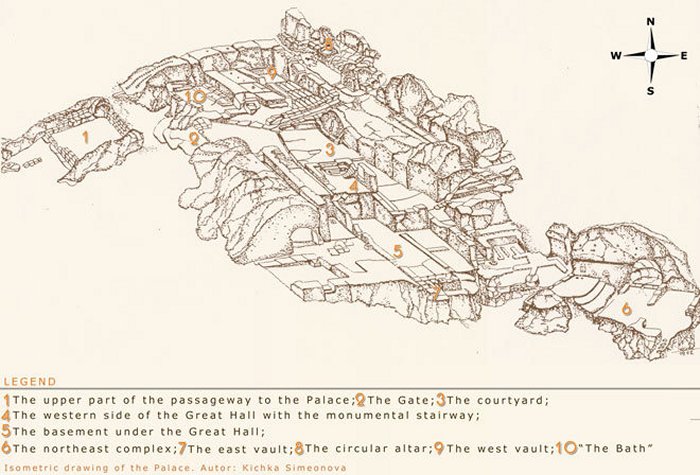 Drawing of the monastery complex at Perperikon.
Drawing of the monastery complex at Perperikon.
All information we possess about this enigmatic ancient civilization is based on the artifacts and ruins left behind. Ancient Greek and Roman historians wrote accounts, but we should not forget that the Thracians were considered barbarians by the Greeks, so not all versions are objective.
In Perperikon, pagan priests carried out their sacred rituals with fire and wine thousands of years ago. Ancient people used massive stone blocks to construct temples and altars. According to experts, an unroofed, oval hall with around an altar carved out of rock, niches, artificially made caves, basins, channels, and rock-cut steps support the theory that this site also functioned as a sanctuary.
While the history of Perperikon goes back to 5000 B.C, the huge Thracian city called Bulgaria's Macchu Picchu dates to around 1,500 B.C. Also referred to as the European Machu Picchu or the "Stone Pompeii," the city is astonishing because it reveals ancient building techniques that were previously not associated with the Thracians. Bulgaria's Macchu Picchu has buildings, rooms, streets, squares, and a water supply system. Perhaps the Thracians were more advanced than we have previously thought.
Thracians practiced a fire dance ritual in honor of the world's creator. This ancient ritual is today known as Nestinarstvo and involves dancing barefoot on broken coals.
People still practice fire dancing in several villages on the Bulgarian side of Strandzha Mountain.
 Bulgarian archaeologist Prof. Nikolay Ovcharov shows part of a marble relief of the Thracian Horseman found at Perperikon. Photo by BGNES
Bulgarian archaeologist Prof. Nikolay Ovcharov shows part of a marble relief of the Thracian Horseman found at Perperikon. Photo by BGNES
People still perform the fire dance (modern version) like the way the ancient Thracians would have practiced it on their cult altar in honor of a creator mother, 1,500 years before Jesus Christ was born.
Mystery Of The Temple Of Dionysus
The Greek historian Herodotus mentioned the famous Temple of Dionysus in his writings. Although the temple was as renowned as the Temple of Apollo at Delphi, we still haven't located it. Archaeologists have been looking for the Temple of Dionysus for more than 100 years without success.
One possibility suggested by famous Bulgarian archaeologists and Professor Nikolay Ovcharov is that the ancient Temple of Dionysus can be found among the ruins of Perperikon.
Perperikon, Kardzhali District, Bulgaria. Image credit: Vislupus - CC BY-SA 4.0
Professor Ovcharov has been excavating at the site since 2000. He thinks he has enough evidence to claim that the stone city of Perperikon could be a sanctuary of ancient Greek and the Thracian god Dionysus.
In Greek mythology, Dionysus(Bacchus) was the son of Zeus. He was the god of wine, joy, theatre, and revelry; many festivals were held in his honor.
In the 14th century, invading Ottoman Turks destroyed many ancient temples, sacred shrines, and fortresses at Perperikon. It was first an ancient Thracian city. Later, the Romans, Goths, and Byzantine Empire took it over. However, it's still possible to piece together the clues scattered across the site and learn more about the intriguing ancient history of this place that was once home to many ancient civilizations.
Thousands of years ago, Perperikon was a massive bald rock, and it became a place of worship.
An ancient legend tells that the peak at Perperikon was called the "rock home of the Sun God." Ancient historians wrote that the shrine of God Dionysus was hidden somewhere in the mountains. The site was of immense importance because of its ancient prophecies.
In April 334 B.C, Alexander the Great visited the Temple of Dionysus, and the oracle prophesied that he would conquer the world. It happened just before Alexander the Great invaded the Persian Empire. The first sanctuary was dedicated to the Sun-God, and was located next to the so-called 'oval hall', where the sanctuary of God Dionisius was built later at this place.
The book” Chronicles of the Roman Emperors” written by Gaius Suetonius Tranquillus long time ago, mentions that “after the wine was spilt onto the altar, the smoke rose up above the top of the shrine and even unto heavens as had happened when Alexander the Great had sacrificed upon the same altar”. It also tells a story of a prophecy, made to the request of Emperor Octavian, the father of Augustus, who later became the famous Emperor of Rome. According to the chronicler, Octavian was crossing the outlying parts of his empire and when he came upon the Holy Mount of God Dionysus, he consulted the oracle about his son. The prophets said to him son was to rule the world.”
Professor Ovcharov says the complex of Perperikon was one of the greatest cult sanctuaries of the Antiquity period.
The tombs of the rulers. PrinceYuki - CC BY-SA 3.0
"We know that in Perperikon, 7000 years ago, there was a rock sanctuary of the sun cult. We have seen these images on ceramics from the Stone-Copper Age, which persisted throughout the Bronze Age, during which the altars were cut into the sanctuary. The second millennium before Christ was the most critical period because this is when the entire system of rock altars, which we are now studying along with the mountain range, Professor Ovcharov said.
While excavating at the site, archaeologists found marble reliefs of the Thracian Horseman with a goddess welcoming him and an ancient amulet depicting the Sun. Both artifacts were very close to an altar that served as an old sanctuary, according to Professor Ovcharov.
The Thracian Horseman, on the other hand, often called the Thracian Heros, was a personification of all earlier religious beliefs of the Thracians – from the creation of their religion, or that it personified their older gods," Professor Ovcharov explained.
There is still no conclusive evidence that the mysterious Temple of Dionysus was located in Rhodope Mountain. Still, many of the archaeological discoveries speak in favor of Professor Ovcharov's hypothesis.
The massive stone blocks reveal ancient peoples' abilities to construct huge temples and altars with the help of giant stone blocks. People who used this complex were not primitive.
Despite years of archaeological excavations at the site, we still know little about this mysterious ancient complex. Perperikon is slowly revealing its ancient secrets. Examinations of unearthed ancient artifacts and ruins have helped us better to understand our ancestors' traditions and religious beliefs.
Europe's largest megalithic sanctuary is rich in history. It will take many years before we can gather all the archaeological pieces scattered across Perperikon.
Written by Ellen Lloyd – AncientPages.com
Updated on March 27, 2024
Copyright © AncientPages.com & Ellen Lloyd All rights reserved. This material may not be published, broadcast, rewritten or redistributed in whole or part without the express written permission of AncientPages.com and Ellen Lloyd
Expand for references
More From Ancient Pages
-
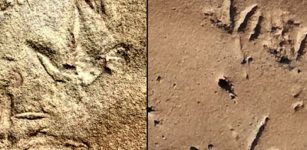 290-Million-Year-Old Bird-Like Footprints Left By Unknown Animals Found In Africa
Fossils | Nov 30, 2023
290-Million-Year-Old Bird-Like Footprints Left By Unknown Animals Found In Africa
Fossils | Nov 30, 2023 -
 Jizo – Protector Of Children, Travelers And Women In Japanese Mythology
Featured Stories | Dec 23, 2015
Jizo – Protector Of Children, Travelers And Women In Japanese Mythology
Featured Stories | Dec 23, 2015 -
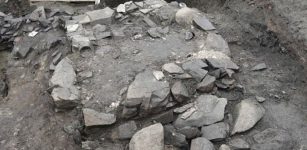 Is A Viking Settlement And Even Older Church Hidden Under St. Clement’s Church In Norway?
Archaeology | Apr 13, 2017
Is A Viking Settlement And Even Older Church Hidden Under St. Clement’s Church In Norway?
Archaeology | Apr 13, 2017 -
 Underwater Excavations: Greek And Danish Archaeologists Research Ancient Harbor Town Lechaion
Archaeology | Dec 25, 2015
Underwater Excavations: Greek And Danish Archaeologists Research Ancient Harbor Town Lechaion
Archaeology | Dec 25, 2015 -
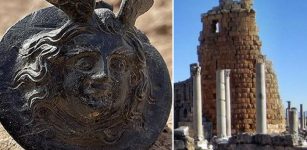 1,800-Year-Old Military Medal with Medusa Head Unearthed In Ancient City of Perge (Perrhe), Southeastern Turkey
Archaeology | Oct 11, 2022
1,800-Year-Old Military Medal with Medusa Head Unearthed In Ancient City of Perge (Perrhe), Southeastern Turkey
Archaeology | Oct 11, 2022 -
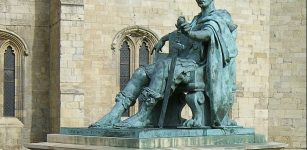 On This Day In History: Edict Of Milan Is Signed – Persecution Of Christians Ends – June 13, 313 AD
News | Jun 13, 2016
On This Day In History: Edict Of Milan Is Signed – Persecution Of Christians Ends – June 13, 313 AD
News | Jun 13, 2016 -
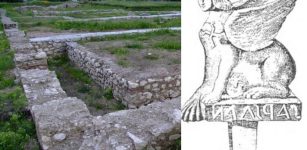 Mysterious Inscription On Naxian-Style Sphinx From Dacia Deciphered
Archaeology | Jan 15, 2024
Mysterious Inscription On Naxian-Style Sphinx From Dacia Deciphered
Archaeology | Jan 15, 2024 -
 Parthians: Their Great Empire And Skilled Horse Archers
Civilizations | Nov 10, 2016
Parthians: Their Great Empire And Skilled Horse Archers
Civilizations | Nov 10, 2016 -
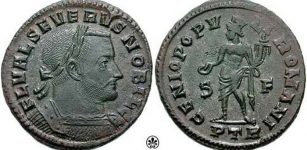 On This Day In History: Western Roman Emperor Severus II Died – On Sep 16, 307
News | Sep 16, 2016
On This Day In History: Western Roman Emperor Severus II Died – On Sep 16, 307
News | Sep 16, 2016 -
 Lady Trieu: Fierce Warrior, Rebel, Freedom Fighter And National Hero In Vietnam
Featured Stories | Feb 26, 2019
Lady Trieu: Fierce Warrior, Rebel, Freedom Fighter And National Hero In Vietnam
Featured Stories | Feb 26, 2019 -
 Two Vikings From The Same Family Reunited After 1,000 Years
Archaeology | Jun 15, 2021
Two Vikings From The Same Family Reunited After 1,000 Years
Archaeology | Jun 15, 2021 -
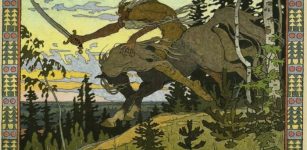 Koshchey ‘The Immortal’: Strong And Wise Ruler Of Darkness In Slavic Mythology
Featured Stories | Jul 3, 2016
Koshchey ‘The Immortal’: Strong And Wise Ruler Of Darkness In Slavic Mythology
Featured Stories | Jul 3, 2016 -
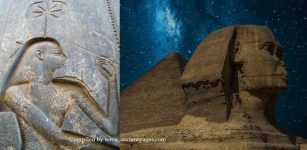 Seshat: Goddess Of Astronomy Aligned Sacred Monuments To The Stars Long Before Imhotep
Egyptian Mythology | Mar 15, 2018
Seshat: Goddess Of Astronomy Aligned Sacred Monuments To The Stars Long Before Imhotep
Egyptian Mythology | Mar 15, 2018 -
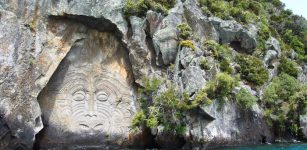 Ancestral Māori Adapted Quickly In The Face Of Rapid Climate Change – New Study Shows
Archaeology | Nov 10, 2022
Ancestral Māori Adapted Quickly In The Face Of Rapid Climate Change – New Study Shows
Archaeology | Nov 10, 2022 -
 Lost Advanced Ancient Forest Civilization In The South West Pacific Could Re-Write History – Legends And Archaeological Findings Examined
Civilizations | Apr 25, 2018
Lost Advanced Ancient Forest Civilization In The South West Pacific Could Re-Write History – Legends And Archaeological Findings Examined
Civilizations | Apr 25, 2018 -
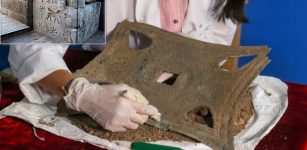 Ornamental Bronze Wall Plate Unearthed In Ayanis Castle Built By Urartian King Rusa II
Archaeology | Sep 13, 2022
Ornamental Bronze Wall Plate Unearthed In Ayanis Castle Built By Urartian King Rusa II
Archaeology | Sep 13, 2022 -
 On This Day In History: The Mongol Conqueror Genghis Khan Died – On August 18, 1227
News | Aug 18, 2016
On This Day In History: The Mongol Conqueror Genghis Khan Died – On August 18, 1227
News | Aug 18, 2016 -
 Aboriginal Legends Tell Millennia-Old Stories Of Events In The Sky
Myths & Legends | Mar 6, 2015
Aboriginal Legends Tell Millennia-Old Stories Of Events In The Sky
Myths & Legends | Mar 6, 2015 -
 Ancient People In The Tibetan Plateau Had More Cultural Exchanges Than Previously Thought
Archaeology | Apr 30, 2024
Ancient People In The Tibetan Plateau Had More Cultural Exchanges Than Previously Thought
Archaeology | Apr 30, 2024 -
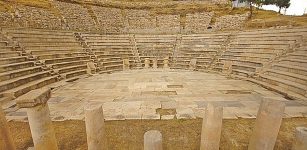 Cult Of Zeus Discovered In The Ancient City Of Metropolis
Archaeology | Dec 21, 2015
Cult Of Zeus Discovered In The Ancient City Of Metropolis
Archaeology | Dec 21, 2015
